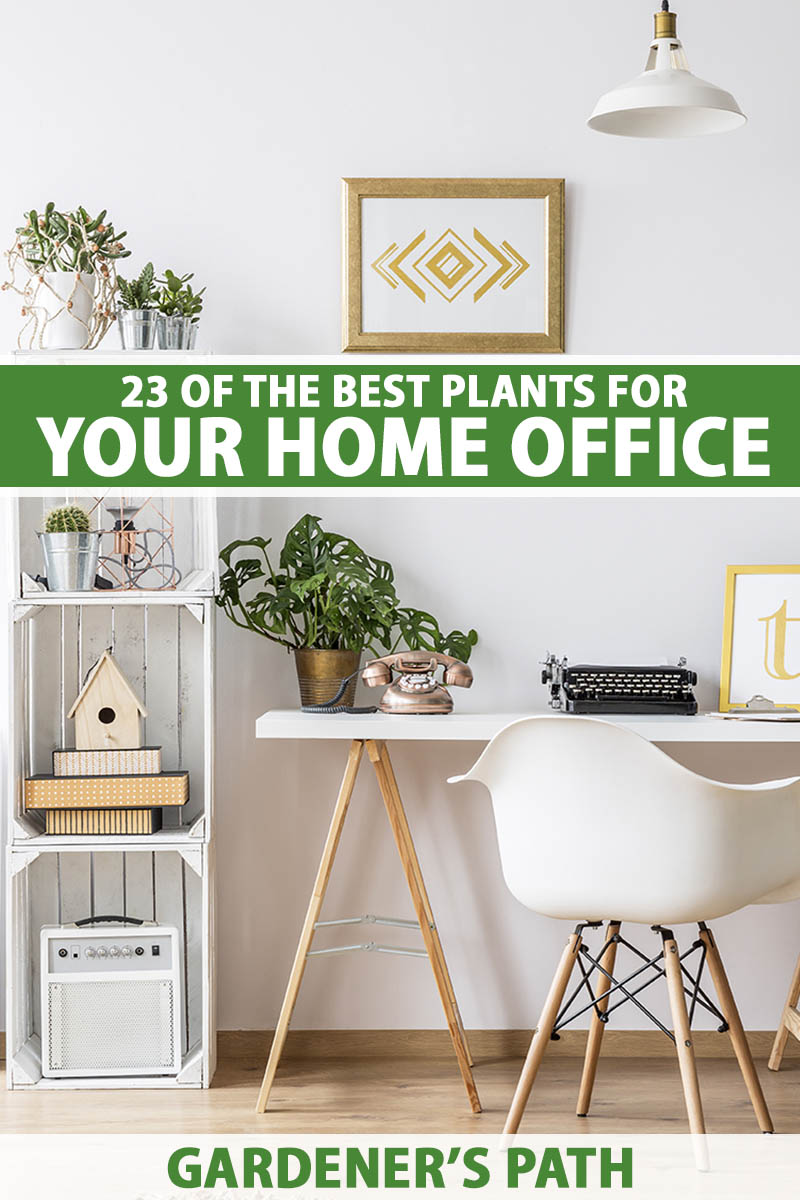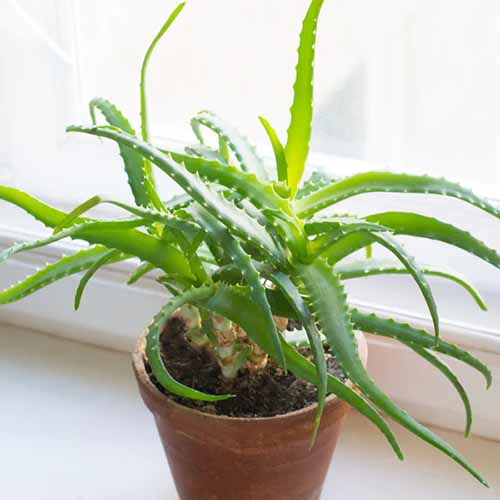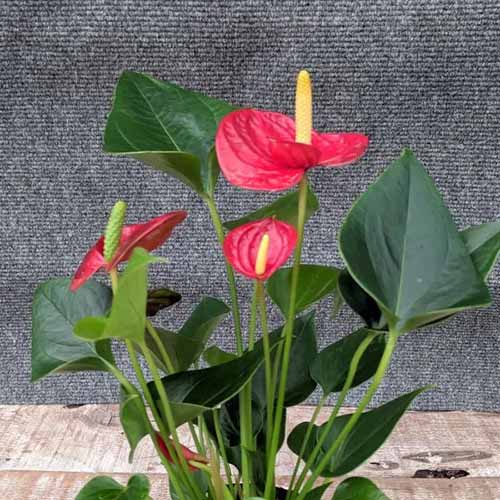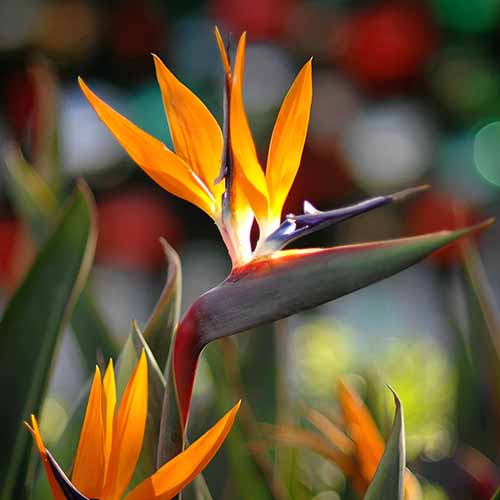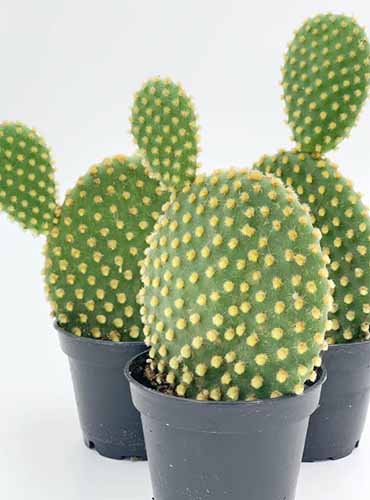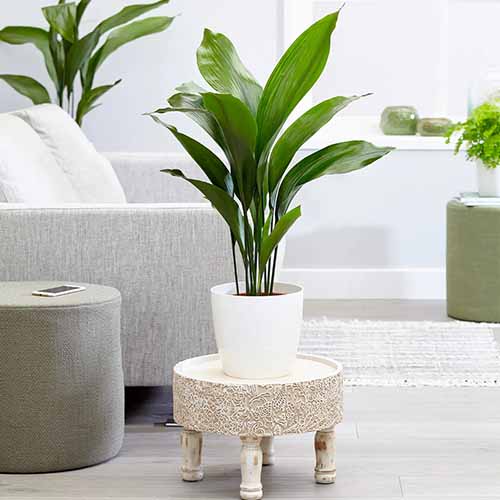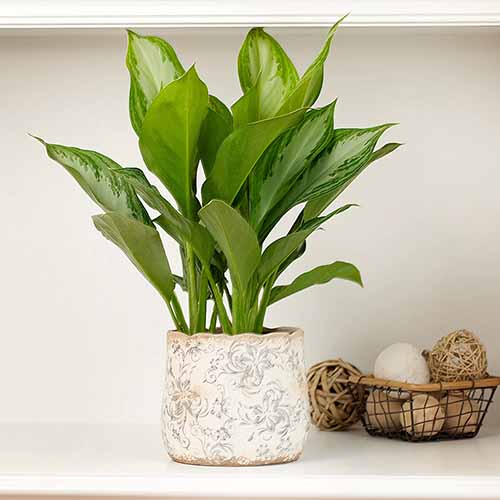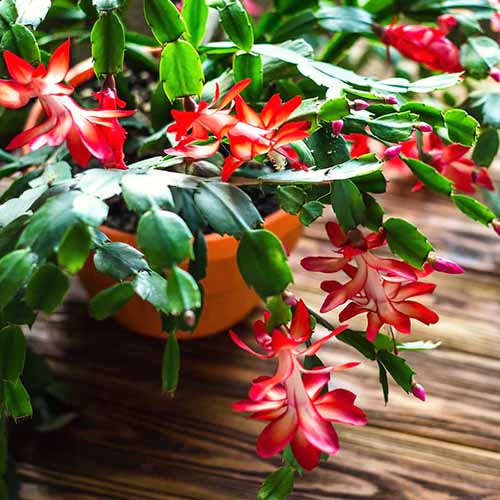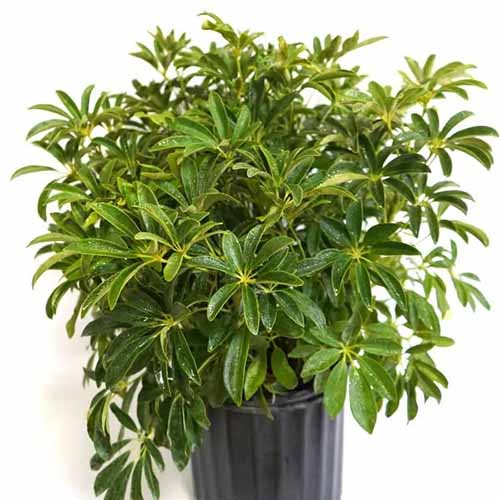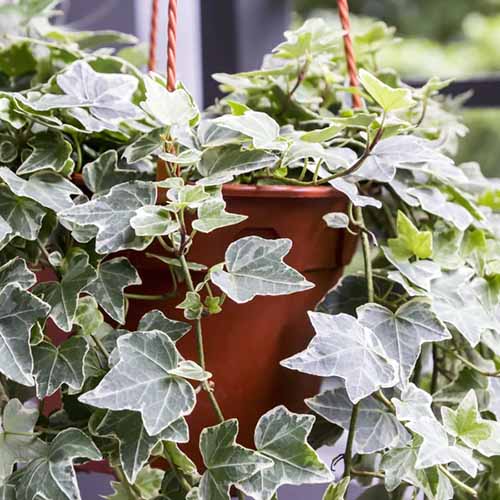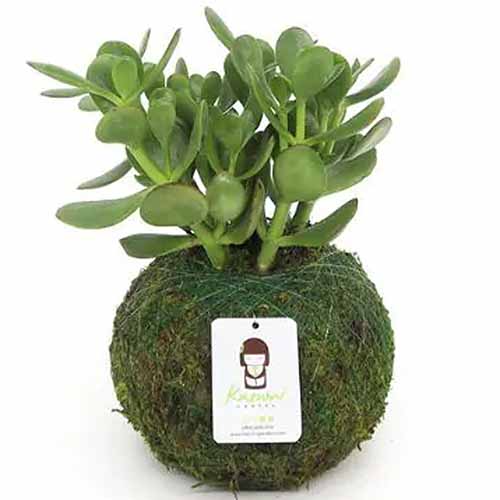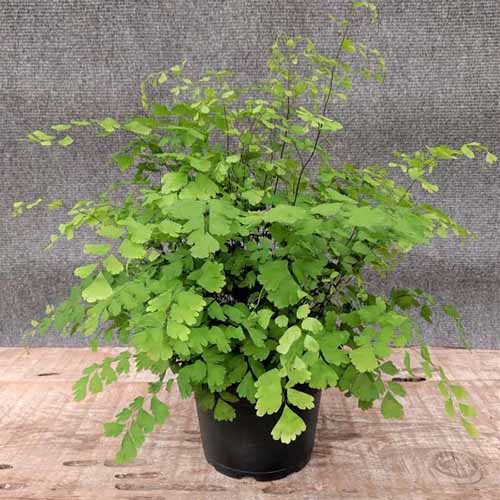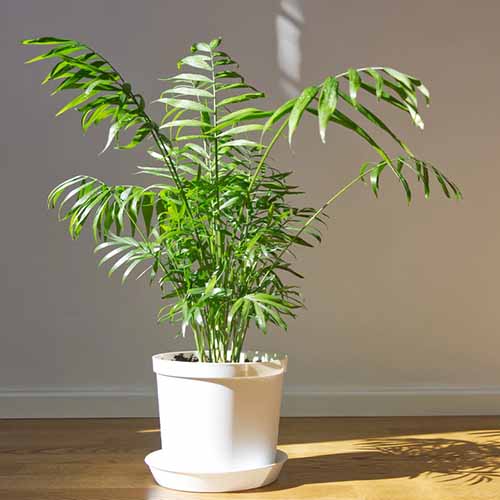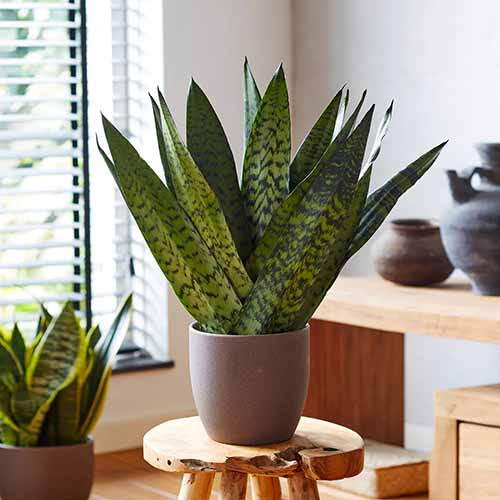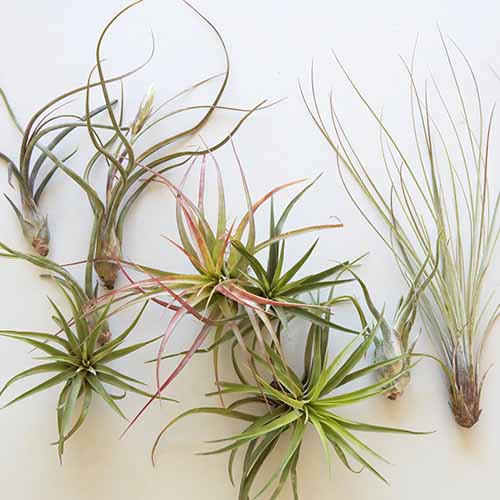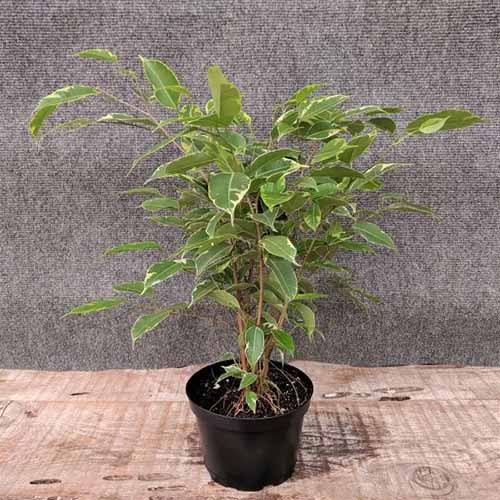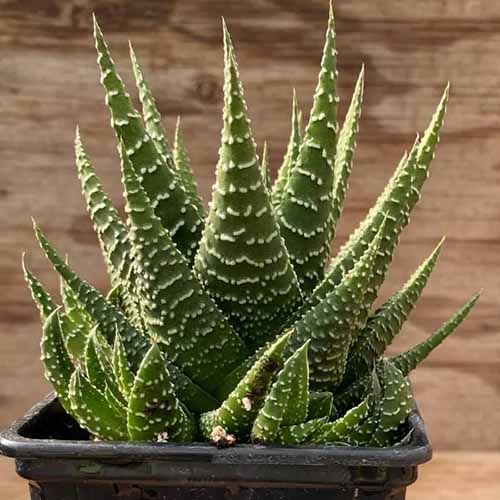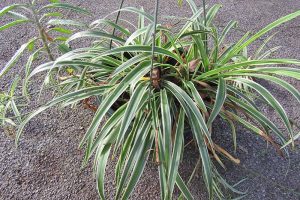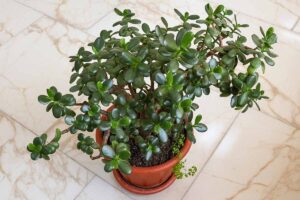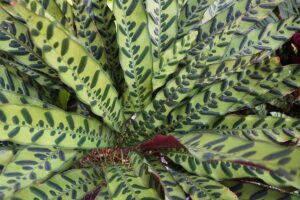If you work from home, a few choice houseplants in your home office can transform your space into a zen-like oasis.
Adding some greenery to the office can brighten up the decor while you are stuck working indoors.
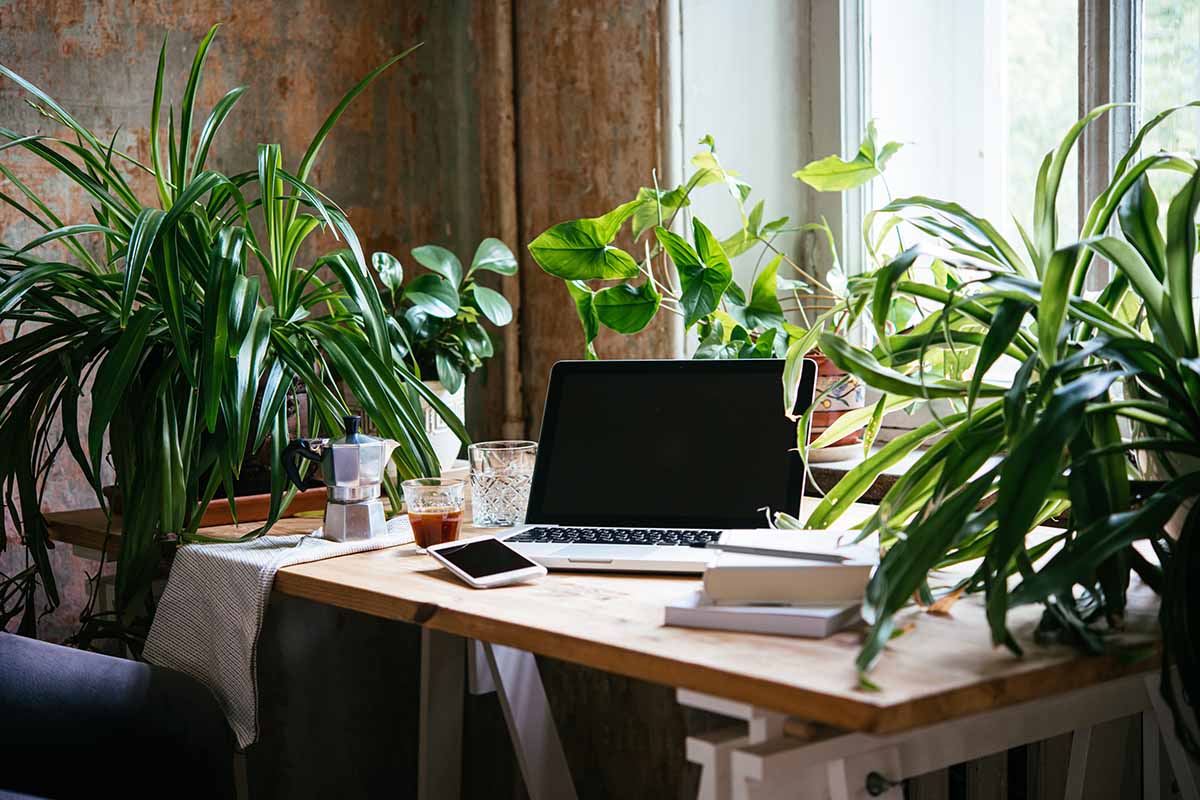
We link to vendors to help you find relevant products. If you buy from one of our links, we may earn a commission.
The following list includes plants that thrive indoors with little maintenance.
No matter what type of space you have: light or dark, large or small, you can find a perfect houseplant companion or two.
Intrigued? Read on to learn about 23 of the best houseplants for your home office:
23 Best Plants for the Home Office
This guide will briefly introduce each species and provide tips about how to care for them, as well as suggestions as to where you may be able to purchase a specimen of your own.
1. Aloe
There are many varieties of Aloe (Aloe spp.) that make excellent indoor plants.
Aloe vera (A. barbadensis) in particular is popular for its medicinal uses as well as its low maintenance care requirements.
The cooling gel within the fleshy, succulent green leaves can be used to ease irritation from minor burns and wounds.
Aloe plants grow one to three feet tall, and produce offsets or “pups” which you can use to propagate new specimens.
This succulent is best for a sunny windowsill as it thrives in bright light.
Provide well-draining soil, give it a drink of water every couple of weeks, when the soil is dry two inches down, and it should grace your home office for many years.
You can find aloe available for purchase from Planting Tree.
Learn more about how to grow aloe vera in our guide.
2. Anthurium
Anthurium spp. is a genus of showy tropical perennials that make wonderful houseplants and will add a pop of color to your home office.
They are commonly referred to as flamingo flowers thanks to the stunning waxy spathes that surround the long lasting blooms.
While the spathes are typically bright red, you can also find varieties in pink, purple, white, or green.
Anthuriums are slow growing and tolerant of low-light conditions, reaching a mature height of between one and two feet.
They do require high humidity and warm temperatures of around 70 to 85°F, so these are best for an indoor space that can meet these needs.
Grow them in well-draining, coarse potting mix, and water whenever the pot is dry a quarter of the way down.
You can find red anthuriums (A. andraeanum) available from Nature Hills Nursery in four-inch pots.
You can learn more about how to care for anthuriums in our guide.
3. Bird of Paradise
As the name suggests, bird of paradise (Strelitzia reginae) conjures a tropical paradise.
With striking paddle-shaped leaves that can grow to the ceiling, this one is a real focal point specimen.
Birds of paradise are best for a large space with a bright corner, as they can grow over six feet tall, even indoors.
Surprisingly fuss-free for such a dramatic plant, bird of paradise will tolerate relatively low light and are able to thrive in most indoor environments. Just don’t expect them to bloom quite as prolifically indoors as they would outside.
Provide well-draining soil, and allow the top two inches to dry out before you water, birds of paradise can’t stand wet feet!
If you want to add a tiny slice of the jungle to your office, you can find plants available in three-gallon pots from Fast Growing Trees.
And don’t forget to read our guide to growing bird of paradise indoors.
4. Bunny Ear Cactus
Bunny ear cactus (Opuntia microdasys) is an adorable prickly little cactus that loves the sun, so it is an ideal candidate for a sunny south-facing windowsill.
Other than that, it doesn’t need much attention at all. A drought-tolerant desert native, it can go weeks or even months without water.
Provide sandy, well-draining soil that’s allowed to dry out thoroughly before you add water.
It’s a relative of the prickly pear cactus (Opuntia spp.) and has the same sharp spikes, so be careful if you have children or pets visiting your home office frequently.
Bunny ear cactus will grow up to three feet tall in ideal conditions, but usually remains much smaller when grown in a pot indoors.
You can find bunny ear cactus plants in two-inch pots available from Florida House Plants via Wayfair.
5. Cast-Iron Plant
Are you looking for a plant that can tolerate neglect?
With a reputation for being virtually indestructible, the cast-iron plant (Aspidistra elatior) is perfect for someone who is often away and unable to devote much time to houseplant care.
Cast-Iron plants can survive in low light and low humidity, and they tolerate inconsistent watering and temperature fluctuations.
Just keep them out of bright sunshine and make sure you don’t overwater.
Perfect for a neglected corner, these pretty evergreens feature glossy, deep green oblong leaves that can grow a couple feet long and a few inches in width, on a three-foot-tall plant.
You can pick one up from Fast Growing Trees in a one- or three-gallon pot.
Check out our guide to growing cast-iron plants for more information.
6. Chinese Evergreen
For a splash of added color on an office desk, these stunning compact evergreens feature large glossy leaves in a variety of colors and variegations.
Chinese evergreens (Aglaonema spp.) are tolerant of low-light conditions and thrive in a location with indirect light for most of the day.
Very slow growing, they top out at one to two feet tall and don’t require much maintenance at all.
Grow in well-draining, moisture-retentive soil and water when the top inch of the soil is dry.
You can find Chinese evergreens in six-inch pots available from Fast Growing Trees.
Learn more about growing Chinese evergreens in our guide.
7. Christmas Cactus
If you are hoping to add some color to your indoor space, Christmas cactus (Schlumbergera spp.) would be a great choice.
These winter-blooming succulents produce pink, red, or purple tubular flowers that sprout from the end of fleshy green stems called cladodes.
Despite the name, the Christmas cactus is not a true cactus. It is actually native to tropical rainforests, and will need to be watered when the top inch of soil dries out and provided with bright, indirect light.
It’s possible for these succulents to live for 100 years or more, topping out at about one foot tall, with a cascading growth habit.
You can find red Christmas cactus available from Planting Tree.
And check out our guide to growing Christmas cactus for everything you need to know!
8. Dwarf Umbrella Tree
Dwarf umbrella trees (Heptapleurum arboricola syn. Schefflera arboricola) are tropical shrubs or small trees, ideal for a brightly-lit space.
Their name refers to the drooping whorled leaves that grow in the shape of umbrellas.
While full-sized umbrella trees can grow in excess of 25 feet, dwarf types top out at around six feet tall.
While generally low maintenance, they do need moist soil and at least four hours of indirect light a day. These fast growers also require occasional pruning to maintain their shape and compact size.
You may also have to rotate them occasionally since they tend to lean towards the light source.
Find one for your office available from Nature Hills Nursery in a #3 container.
Learn more about how to grow umbrella plants in our guide.
9. English Ivy
Want to bring a bit of that secret garden vibe into your office? This dramatic climbing vine is just the ticket to add a bit of magic to an otherwise drab indoor space.
A fast grower that does well in low light, English ivy (Hedera helix) is another ideal selection for a room with few windows. Water when the top inch of the soil dries out.
If you are low on desk space English ivy looks fantastic trailing from a hanging planter.
There are a number of different cultivars to choose from, or you could go with this elegant variegated type, available from Planting Tree, featuring cascading muted green leaves with yellow or white veins and edges.
Check out our guide to growing English ivy indoors to learn more.
10. Jade Plant
Also known as the wealth or money plant, jade plants (Crassula ovata), with their fleshy teardrop shaped leaves are said to bring good luck in business endeavors.
They don’t require much care or water and can survive in most indoor conditions, living for a long time – up to 50 or even 100 years!
Provide well-draining soil and water when the top two inches dries out.
Check out these unique jade kokedama available from Nature Hills Nursery.
The plants are shipped in soil bundled inside a six-inch ball of moss, eliminating the need for a container. These make elegant living decorations for the home office.
You can learn more about growing jade in our guide.
11. Lucky Bamboo
Another symbol of good luck, these eye-catching plants have uniquely-shaped stalks that may grow straight or be trained to twist around each other, and are topped with droopy green leaves.
Though the stalks resemble mini bamboo shoots, they are not actually related to their namesake at all.

These incredibly resilient houseplants are an ideal choice for beginners or those who are frequently out of the office. They tolerate low light and rarely need watering.
Lucky bamboo (Dracaena sanderiana) can grow in soil, pebbles, or even a vase of water.
Just make sure you use bottled or distilled water, as they are a bit sensitive to chlorine or minerals commonly found in drinking water.
Our guide to growing lucky bamboo has more details.
12. Maidenhair Fern
Small feathery fronds set atop shiny black stems, these shade-loving ferns do really well in an office with few windows.
They are clump-forming and top out at one to two feet tall, spilling over the side of their containers.
Maidenhair ferns (Adiantum spp.) are slow growers and rarely need repotting, though they do prefer a humid environment, and be sure to water enough to keep them moist but never soggy.
They have a reputation for being difficult to grow, but if you’re spending a lot of time working in your office, you’ll be well-placed to tend to their needs!
Adiantum raddianum is available in four- and six-inch containers from Nature Hills Nursery.
13. Parlor Palm
Parlor Palms (Chamaedorea elegans) are popular houseplants for good reason – they are hardy, undemanding, and thrive in indirect or low lighting.
Elegant and easy to care for, these tropical palms feature dark green fronds that emerge from a single trunk, and can grow up to three or four feet tall indoors.
During the summer months, keep the soil consistently moist but not waterlogged, and when winter rolls around, wait until the top two inches of soil has dried out.
The perfect solution to brighten up a dreary corner – you can find parlor palms available for purchase from Perfect Plants Nursery.
Learn more about growing parlor palms in our guide.
14. Peace Lily
These easy to grow tropical evergreens can certainly add some cheer to any indoor space.
If set in a location with bright sunlight, peace lilies (Spathiphyllum spp.) will produce white flowers in early summer through fall.
They will also grow in low light conditions, just don’t expect blooms. The upright waxy green foliage is attractive enough on its own, so they still make wonderful houseplants regardless of whether or not they flower.
Peace lilies can grow up to six feet tall in optimal conditions, but indoors you can expect them to stay around a foot tall, if that. You can allow the top inch of soil to dry out between waterings.
You can find potted peace lilies available from Nature Hills Nursery.
Our guide to growing peace lilies has more information about these easy-care plants.
15. Peperomia
This genus of tropical plants contains more than 1500 species, with many being popular as houseplants. The Peperomia genus features many different varieties with thick, fleshy foliage, often with beautiful colors and variegations.
All are low maintenance, need minimal water, and do well in medium to bright, indirect light.
There is a huge variety of different types, from the radiator plant with its textured leaves, to the succulent P. graveolens ‘Ruby Glow’ which features a mounding growth habit topping out at about 10 inches tall.
You can find ‘Ruby Glow’ peperomia plants in two-and-a-half-inch pots available from Hirt’s Gardens via Walmart.
Learn more about how to grow ‘Ruby Glow’ in our guide.
16. Philodendron
There are hundreds of species of Philodendron, many of which are easygoing houseplants. They typically have large glossy green leaves, and come in both vining and upright varieties.
Vining types can grow from hanging baskets or up a small trellis, and non-climbing varieties make excellent container specimens. Depending on the type, they generally require watering when the top inch or two of soil has dried out.
If you’re interested in a climbing philodendron, P. hederaceum ‘Brasil’ is a gorgeous heart-leaf cultivar with variegated yellow and gold foliage.
The vines grow up to 15 feet long and look fabulous trailing over the side of a cabinet or in a hanging basket.

You can find ‘Brasil’ available in six-inch pots from the American Plant Exchange via Amazon.
‘Congo Rojo’ is a beautiful upright variety with stunning leaves that emerge ruby red and turn green as they age.
Perfect for the larger office space where you want to make a big statement! This one grows up to three feet tall and wide at maturity.
You can find ‘Congo Rojo’ available at Planting Tree.
And for more information about growing philodendrons, check out our guide.
17. Pothos
Pothos (Epipremnum aureum) are tropical vines that can be grown in hanging pots or as tabletop specimens.
One of the most popular houseplants, they do well in low or indirect light, and can be grown in well-draining houseplant soil or directly in a jug of water.
Featuring dark green, glossy foliage, there are variegated cultivars that have leaves streaked in bright green or yellow.
The vines can grow up to 10 feet long, and can be trained up a moss pole or allowed to cascade over the side of a pot. Water when the soil dries out completely – these pothos hate being overwatered!
You can find golden pothos with golden-yellow variegation available from Perfect Plants Nursery.
Learn more about growing pothos in our guide.
18. Snake Plant
Snake plants (Dracaena trifasciata syn. Sansevieria trifasciata) are slow-growing broadleaf evergreens with tall deep green and yellow striped leaves.
They typically grow to be about two feet tall indoors, though occasionally taller, and can thrive for years with minimal care.
Snake plants do fine in low or bright light and need watering only once every couple weeks, when the soil has dried out.
‘Zeylanica’ features light green leaves with darker green zebra-striping, making a lovely low-maintenance addition to your home office.
You can find ‘Zeylanica’ in three-gallon pots available from Fast Growing Trees.
Our guide to growing snake plants has more information.
19. Spider Plant
Spider plants (Chlorophytum comosum) are some of the most common houseplants around.
With long, striped grasslike leaves that hang down, they are the perfect choice for a hanging basket.
They also produce small plantlets that dangle from trailing stems from the parent plants, resembling spiders on a web.
These super hardy perennials are popular with novice gardeners because they are tolerant of neglect, adapt well to low or indirect light, and don’t mind being pot bound.
Native to warm, humid climates, they do prefer somewhat frequent watering – when the top inch of soil dries out.
You can find spider plants in six-inch containers available from Nature Hills Nursery.
You can learn more about growing spider plants in our guide.
20. Tillandsia
Tillandsia is a genus of about 650 species of perennial evergreens in the Bromeliad, or Bromeliaceae, family.
Air plants, as they are commonly known, are unique in that they receive water and nutrients through the air, and do not need to be grown in soil.
They do need bright, indirect light to thrive indoors, so these are perfect for an office space with some natural light.
Since they are not rooted in soil air plants can’t be watered in the traditional way, instead they should be submerged in water for a few hours about once a week, or whenever the leaves start to curl inward.
Most air plants are pretty small, just a few inches tall, ideal for the more compact space.
Assorted Air Plants Tillandsia
Ready to try growing some of these unique plants? Succulent Gardens sells a collection of assorted Tillandsia to help you get started.
You can learn more about growing air plants here.
21. Weeping Fig
Weeping figs (Ficus benjamina) are small trees that feature large arching branches and glossy dark green or variegated foliage.
Popular indoor trees, they are slow-growing and can be easily pruned to your desired height and shape.
Weeping figs can grow up to ten feet tall if you allow them, but some cultivars stay much smaller, topping out at just a few feet in height.
This one does require bright light so it does best in an office that gets some natural sunlight. If you have the space, this is a good selection for a sunny corner.
They can be a bit fussy about water, so you’ll need to check the soil frequently and water when the top two inches dries out.
You can find weeping figs available from Nature Hills Nursery.
And check out our guide to growing weeping figs for full details.
22. Zebra Plant
Zebra plant (Haworthiopsis fasciata) is a fun little succulent with thick white-striped leaves that bears some resemblance to aloe. It rarely needs water and doesn’t require much in the way of sunlight – It can do well in artificial fluorescent lighting.
Only a few inches in size, this petite specimen is perfect for a desk with little space.
Nature Hills Nursery sells a three pack that includes zebra cactus along with thimble cactus (Mammillaria gracilis fragilis), and string of pearls (Curio rowleyanus).
These three space-saving succulents have similar growing requirements and can be grown in a single container for a unique tabletop arrangement.
You can learn more about growing haworthias in our guide.
23. ZZ Plant
ZZ plants (Zamioculcas zamiifolia) are slow-growing evergreens with waxy, dark green foliage that can reflect sunlight and really add some shine to your workspace.
Maturing very slowly to a couple of feet tall and wide, they can sit happily on an office desk for years.
Drought-tolerant and content in low-light conditions, you won’t have much to worry about with these easygoing specimens.
Water when the soil is dry several inches down, as they are prone to root rot if they are overwatered.
You can find ZZ plants in six-inch, two-gallon, and three-gallon containers available from Fast Growing Trees.
And check out our guide to growing ZZ plants for more information.
Create Your Zen Workspace
Whether you have a large well-lit office space, or spend your working hours in a small dark room, it’s not hard to find a low maintenance houseplant companion to beautify your space.
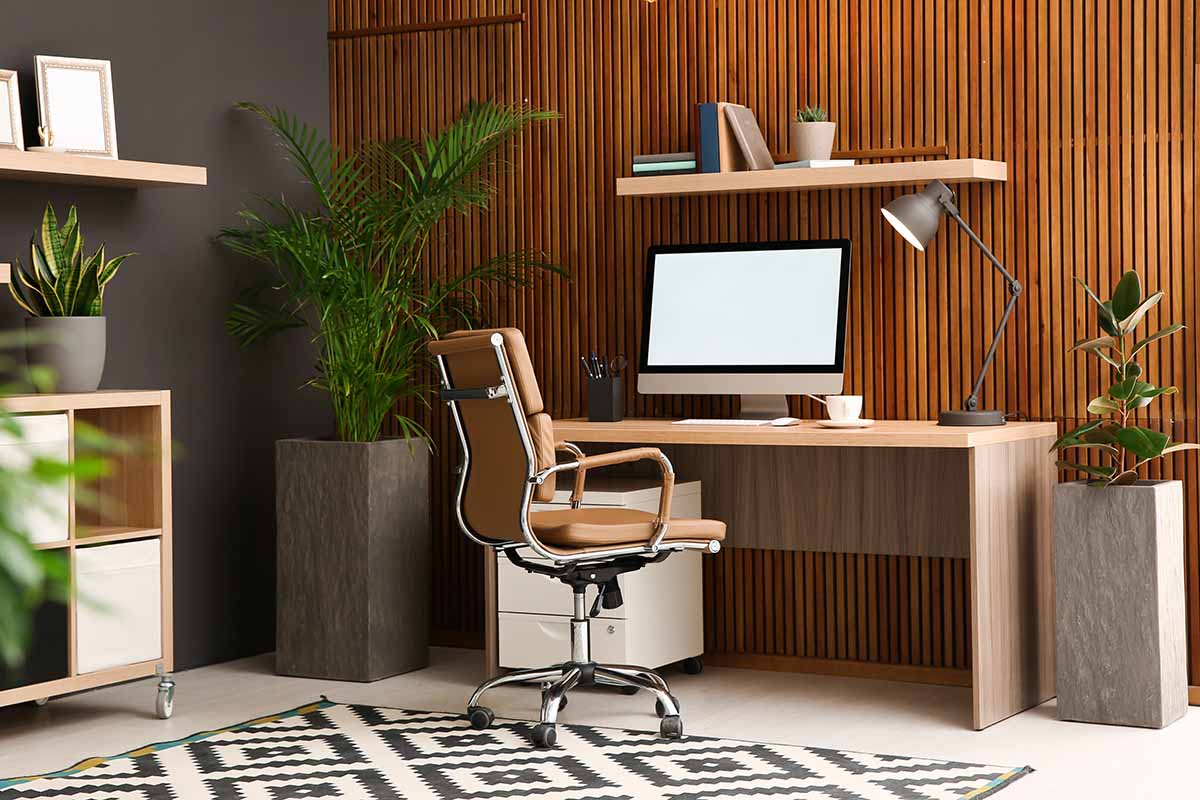
What are your favorite plants to decorate a home office? We would love to hear from you in the comments below!
Have more rooms spruce up? Check out these roundups for more great houseplant ideas next:
